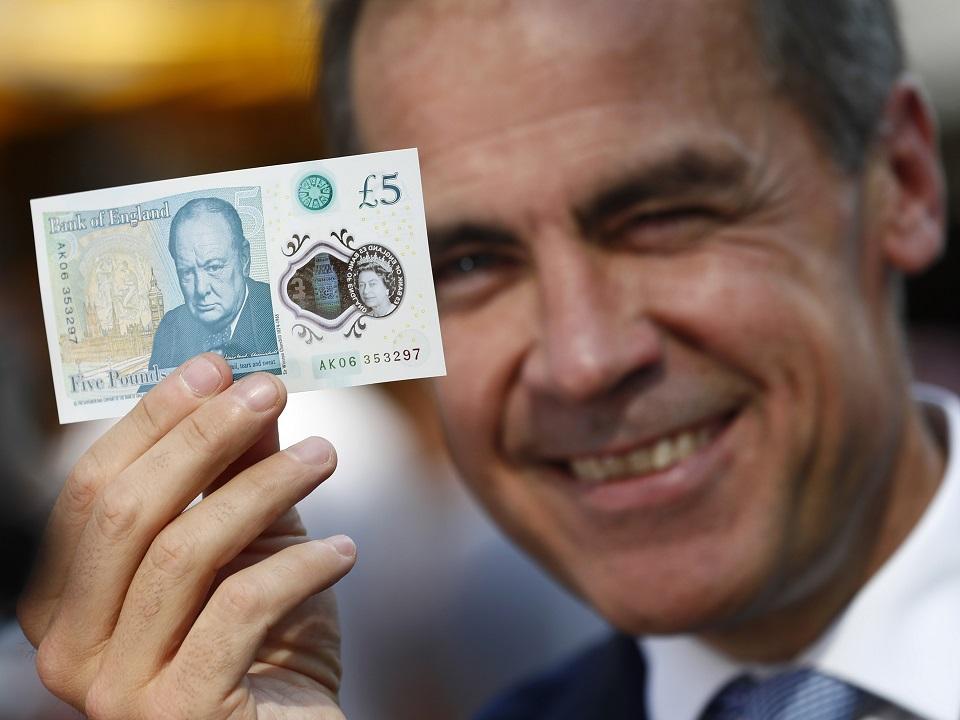Paying with plastic: Britain brings in polymer banknote

LONDON - A new polymer banknote featuring wartime leader Winston Churchill went into circulation on Tuesday in Britain—one of the first European countries with notes that, literally, can be laundered.
The Bank of England will initially issue 440 million of the new £5 notes ($6.70, €5.90) and the old note will cease to be legal tender in May next year.
"The use of polymer means it can better withstand being repeatedly folded into wallets or scrunched up inside pockets and can also survive a spin in the washing machine," bank governor Mark Carney said.
"We expect polymer notes to last at least two-and-a-half times longer than the current generation of fivers and therefore reduce future costs of production," Carney said.
He said it was estimated to last five years.
The new notes also has security features intended to make it harder to counterfeit. These include a see-through window featuring Queen Elizabeth II's portrait as well as a picture of Big Ben in gold foil.

Need a wellness break? Sign up for The Boost!
Stay up-to-date with the latest health and wellness reads.
Please enter a valid email address
Your email is safe with us
The famous Houses of Parliament clock tower is showing the time as 3:00 p.m., the approximate time on May 13, 1940, that Churchill delivered a famous speech to parliament during World War II.
The new note carries a portrait of Churchill and a quote from that speech saying: "I have nothing to offer but blood, toil, tears and sweat."
Carney described Churchill as "one of the greatest statesmen of all time."
The new note is printed on a plastic film which is already used in Australia, Brazil and Canada.
On its website, the Bank of England explains that the plastic film is transparent and "specially coated with an ink layer that enables it to carry the printed design features of banknotes."
It said that the banknotes are resistant to dirt and moisture, more secure and more durable than paper banknotes—and even more environmentally friendly, "due to their durability."
"The waste from old polymer notes will be fully recycled, which is the option with the lowest environmental impact," it said.
In Europe, Romania also uses polymer banknotes.
Including Churchill on the banknote prompted criticism as his image replaced that of prison reformer Elizabeth Fry, leaving the queen as the only female figure on Bank of England notes.
A petition prompted the bank to unveil a new £10 note, which will come out next year, featuring novelist Jane Austen. A new £20 note will include the image of artist J.M.W. Turner and is due to be issued by 2020. — Agence France-Presse

Need a wellness break? Sign up for The Boost!
Stay up-to-date with the latest health and wellness reads.
Please enter a valid email address
Your email is safe with us





